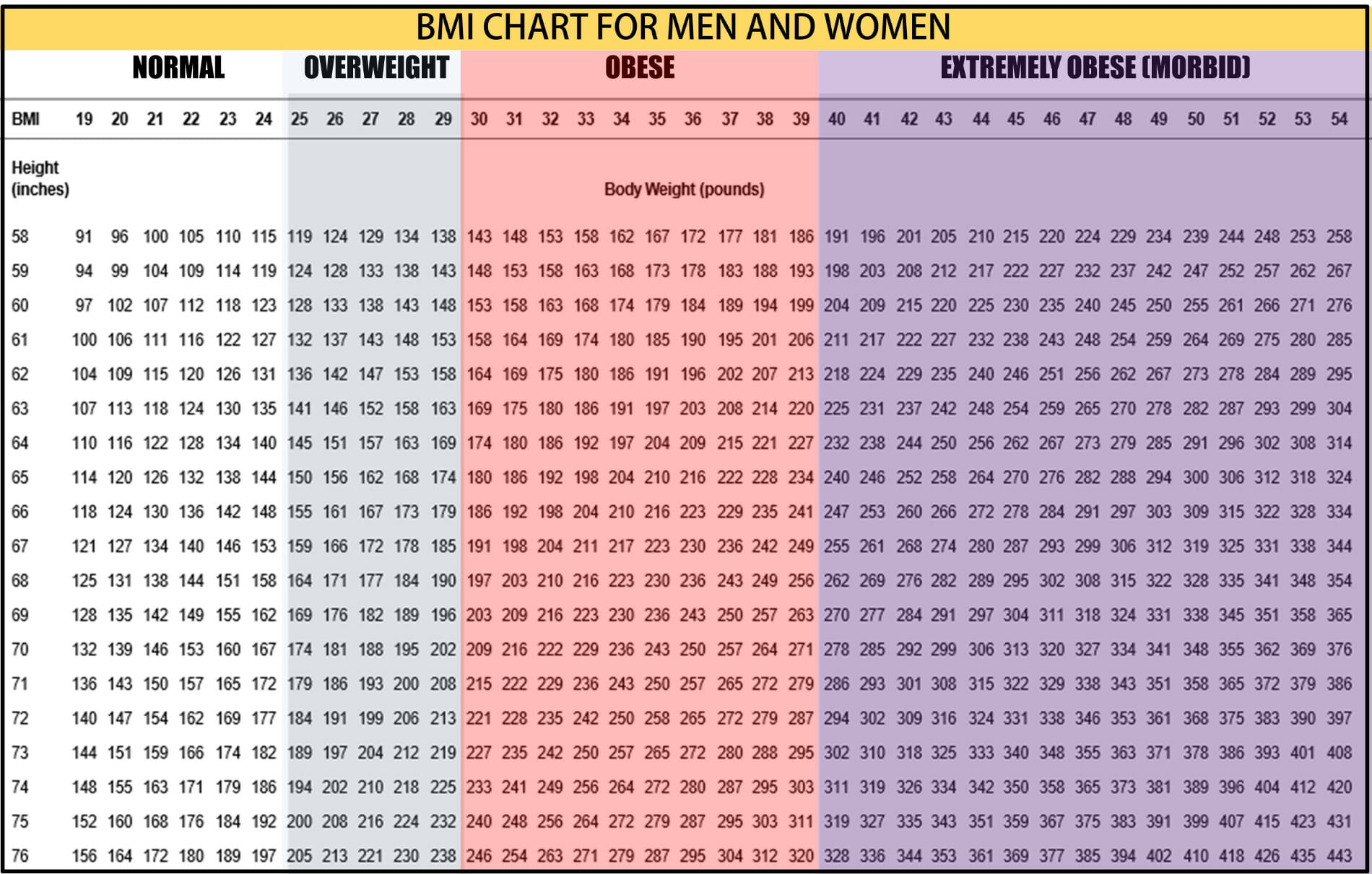
Legislation related to the BMI - There are laws to ensure that people interested in fashion can fight anorexia with ease. In the US, it supports people with eating disorders such as bulimia nervosa and anorexia nervosa. The exceptions include kids, athletes, the infirm and elderly people. Use in clinical practice - This BMI Calculator is a reliable tool to measure the category to which the sedentary individuals belong, i.e. As per the cross-sectional studies, the BMI of sedentary people can reduce when they become physically active. It is primarily helpful in the trend recognition in case of sedentary or overweight individuals owing to small error margin.WHO has been using it since the 1980s as the means of measuring obesity statistics. Correlating the groups linked by general mass - This helps in the estimation of adiposity in a vague manner. This parameter is used for the following purposes: What are common uses of the Body Mass Index? Cancers such as colon cancer, endometrial cancer, breast cancer. Increased chances of mortality even in the case of non-smokers. When the calculated BMI of people is below 20 or above 25, it leads to numerous health problems such as: What are health implications associated with abnormal BMI ? Kids BMI between the 85th and 95th percentile are classified as overweight. Obese kids are those with a BMI exceeding 95th percentile. When the kids BMI is less than 5th percentile, it is categorized as underweight. The comparison of the BMI is done against the percentile for children of similar age and gender. The calculated BMI is compared with those of other kids of their age instead of any fixed threshold as in the case of adults. In the case of kids, there is a variation in the method of measuring BMI. What are the children's BMI within the age group 2-20?Ī recent study conducted in Britain indicates a higher BMI of females of the age group 12-16 by 1 kg/m2 on an average, compared to the males of the same age. Parameters such as body volume index are better determinants of obesity measurement in such cases. People who are very fit will have an inaccurate BMI because their high muscle mass will categorize them under the overweight class. It is seen that those in the BMI range 20-30 comes under a wide range of body fat percentages. Studies indicate that this parameter is better in determining if a person is not obese rather than determining if a person is obese. Similarly, in the case of the people with lean body mass, the excess adiposity is underestimated. If we consider the example of people with more lean mass such as the athletes, BMI makes an overestimation of their adiposity. The fat mass and muscle mass distribution assumptions are never accurate. It uses natural scaling of mass with the third power of height to attain realistic results, unlike BMI. There is another parameter named Ponderal Index or Corpulence Index that was initially started by Swiss physician Fritz Rohrer. This indicates the unreliability of the parameter in measuring the fat level of an individual. It actually becomes double, which implies an unusually high BMI for taller people. The BMI of an individual doesn't remain the same if we double the body dimensions, as mass scales with the cube of height. Overweight and obesity issues are generally seen among Americans and is the least in Southeast Asia. Overweight - The BMI range for overweight individuals is from 25 to 30 or more. Normal Weight - In this case, the BMI ranges from 18.5 to 25. Underweight - The BMI is below 18.5 kg/m2. Though the exact dividing line between the classes is still under debate, we have some commonly accepted BMI ranges. 
How are people categorized using the Body Mass Index Calculator?īMI is the best way to categorize people on the basis of their height and tissue mass. This excess or deficiency is considered to be body fat, though there is muscularity and other factors which affect the BMI remarkably.

The BMI calculator is basically used for knowing the deviation of the person's body weight from the normal. We can describe it as the body mass divided by the body height's square. The tissue mass includes muscles, fat as well as bones.

Body Mass Index or BMI is a parameter calculated by using the tissue mass and height of a person.







 0 kommentar(er)
0 kommentar(er)
